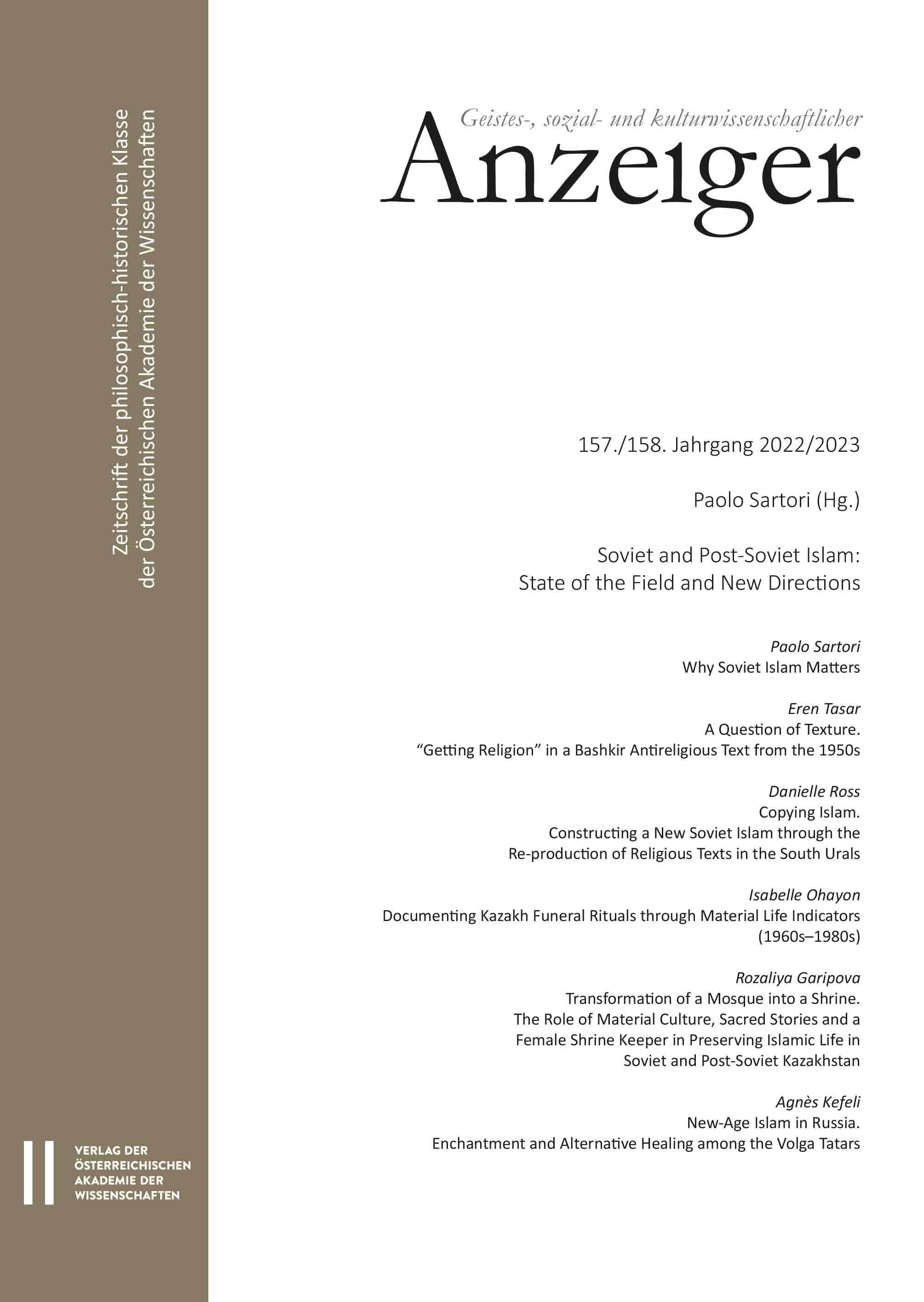
Geistes-, sozial- und kulturwissenschaftlicher Anzeiger, 157. Jahrgang 2022, Heft 1+2, pp. 107-135, 2023/09/21
157. Jahrgang 2022/2023, Heft 1+2

This paper analyzes oral narratives which developed around a mosque in northeastern Kazakhstan and the role that these narratives and the building of the mosque played in the resilience and survival of Islam in the Soviet and post-Soviet times. The mosque is in the village of Akkulsk not far from the city of Semey. It was built around 1905, was repurposed as a school and club under Soviet rule and subsequently was neglected in the later Soviet period when the inhabitants of the village of Akkulsk moved away. Despite its physical decay, people continued to treat the mosque building as a sacred object. I suggest that oral narratives played an important role in turning the Akkulsk mosque into a shrine as well as enabling its survival. The main protagonist circulating the sacred narratives is an elderly woman who had been a keeper of the mosque when everyone else in the village had left. The article explores how sacred narratives are interconnected with gender and female authority and with the collective memory of the former village community. This case helps us rethink the role of the mosque as a place of worship, the forms of Islamic religiosity in the post-Soviet period and the impact of Soviet rule on Islam in Kazakhstan.
Keywords: Sacred narratives, post-Soviet Islam, Kazakhstan, material culture, female religious authority